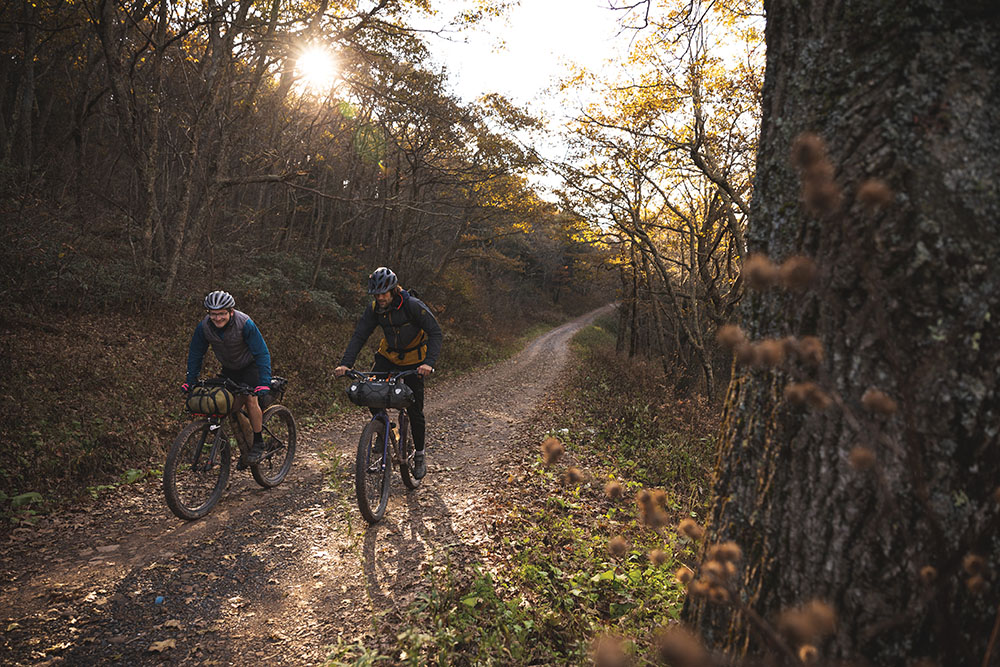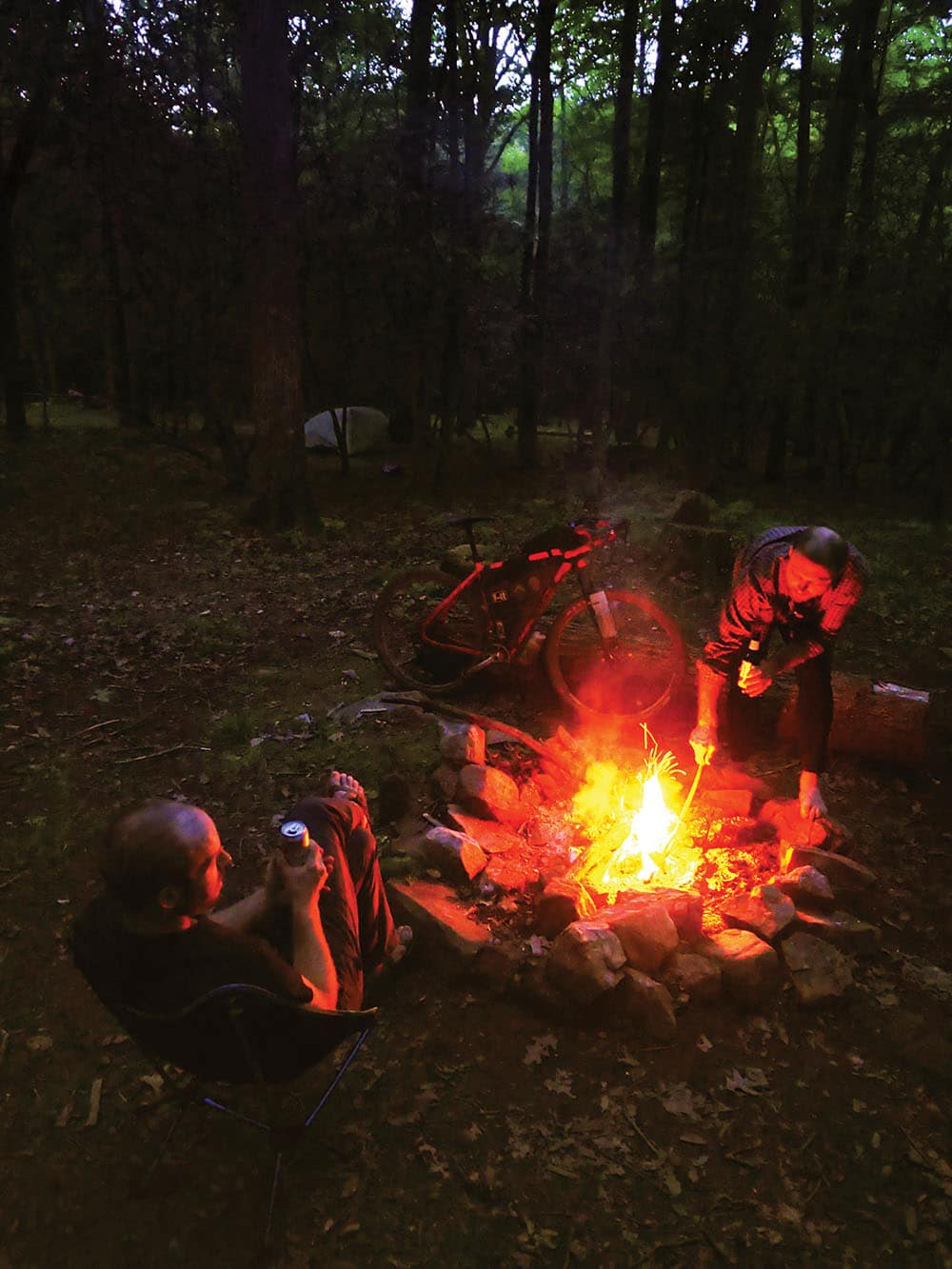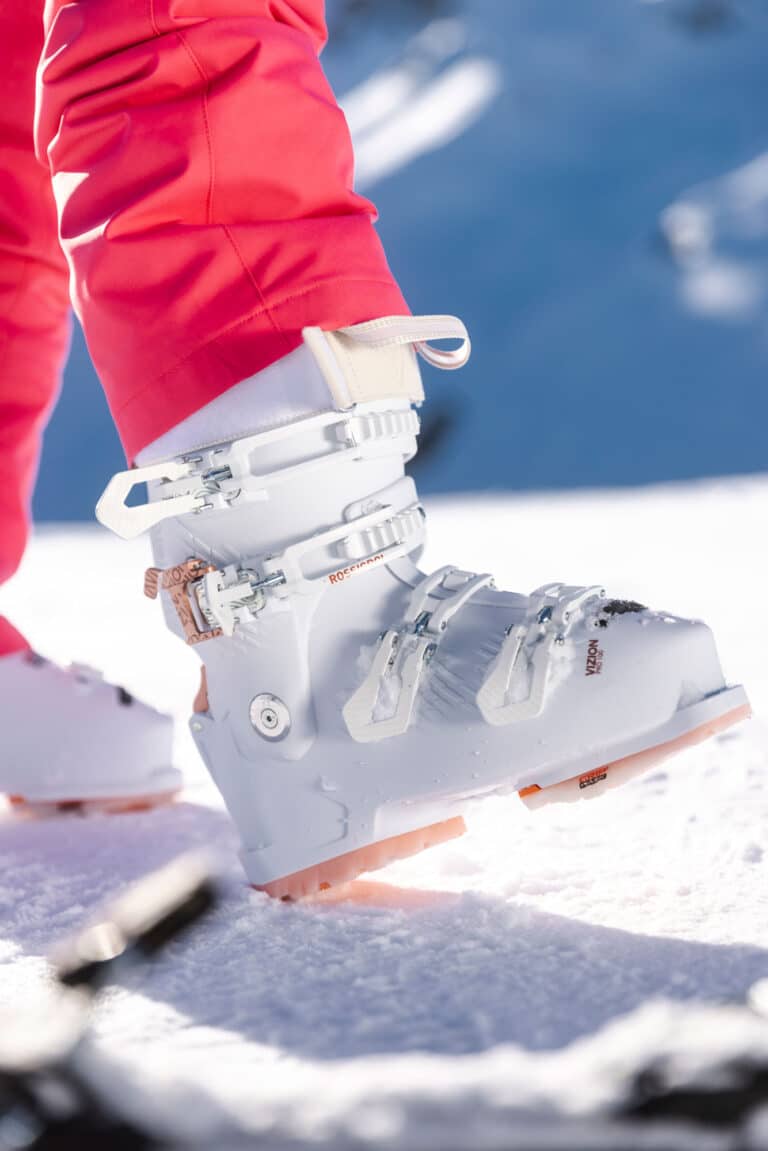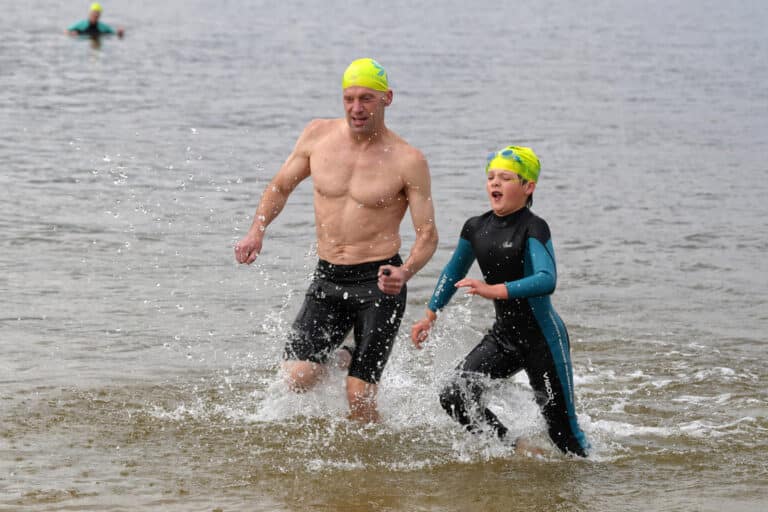The Southeast offers fantastic overnight mountain biking experiences. These user-friendly weekend routes are some of the region’s best.
photo by Chris Hunt
I love the scenic immersion of long-distance backpacking—the isolated vistas and pristine ecosystems, the wildlife, the backcountry camping along walks less traveled. Yet I often end up fixating: ‘Wouldn’t these trails be great by mountain bike?’ Spot a flowy downhill run and I’m consumed by the need to thrash. It gets unbearable, quick.
Seeking resolution led me to mountain bikepacking. On one hand, it’s about trekking into beautiful wild areas in the middle of nowhere and sleeping under the stars, but getting to the remote destination includes some righteous shredding along the way. Here we round up a trio of superlative user-friendly routes in the Blue Ridge. Each blends MTB rippers with awesome camping and backcountry experiences.
Stokesville 60K Loop
(Mount Solon, Virginia)
Background: A 20-plus-year partnership between what is now the Shenandoah Valley Bicycle Coalition and the U.S. Forest Service has transformed the North River District of the George Washington National Forest into a mountain biking haven. Most trails were either purpose-built for bikes or retooled accordingly. Expect one of—if not the—best non lift-assisted systems in the state. Riding the Stokesville 60K route ensures a smooth, action-packed experience.
Bonus: With lower trailheads located just 15 miles west of Interstate 81 and less than 20 miles from the city of Harrisonburg, access is incredibly convenient.
Scenery: This section of the Shenandoah Mountain Range is highly rural and backs onto the border of West Virginia. Routes carry you into the Alleghany Mountains and some of the highest MTB terrain in the state. Peaks at Reddish Knob, for instance, bring about 4,400 feet of elevation—and panoramic views of the Shenandoah Valley. Dense forest abounds. It includes one of the last remaining stands of mature Canadian hemlocks in the Southeast.
The Ride: Expect a hit-parade of about 40 miles of the area’s top trails interspersed by occasional gravel connectors. While there are some long climbs, efforts are rewarded with beautiful ridgelines and long, fast, and flowy descents. For instance, Tillman West brings 2.1 miles of modernized downhill thrills with loads of berms, rollers, and jumps. Parts of the Wild Oak Trail offer quick drops and rocky, technical sections.
Camping: Pitch a tent trailside throughout most of the riding area. Some well-established sites can be found on Reddish, Bother, and Flagpole knobs. Alternatively, the loop is designed to begin and end at the Stokesville Campground. Situated on the edge of the national forest on the banks of the North River, it’s a great basecamp for exploration.
Learn More: For trail maps and other information, visit svbcoalition.org.

Blackwater Falls to Canaan Valley Resort State Park (West Virginia)
Background: Both state parks are staples of the West Virginia MTB scene and feature prominent trail networks. Both are surrounded by the Monongahela National Forest. Connect the two by way of a roughly five-mile segment of the 330-mile-long Allegheny Trail. The latter passes over the remote, high plateau of the Canaan Mountain Backcountry area, bringing 4,100-plus-foot peaks and a range of interesting habitats.
Scenery: In the 2,358-acre Blackwater Falls State Park, its namesake river drops about 60 feet at the head of Blackwater Canyon. The relatively little-visited national forest backcountry brings isolated high-elevation Appalachian red spruce forests and seasonal wetland areas that, during early spring and summer, attract rare species of migratory birds—like colorful cerulean warblers and red crossbill.
The Ride: Pick your poison. For those that like to go big, starting at Blackwater offers an epic 38-mile loop combining trails in the park and the adjacent national forest. Known as the Rattlesnake, it’s based on the 2012 course of a longstanding annual race. (Luckily, shortening it is easy.) Cap off a day of riding with camping along the Allegheny Trail. From there, proceed to Canaan Valley Resort park, which added six miles of modern, machine-built flow trails—and a pump track—in 2019.
Camping: Options abound. You can nab a primitive site in either park, or pitch a tent between the two in the national forest. The former will run you $17 or $35, respectively. The latter is free.
Learn More: For more info, including maps, visit the West Virginia Mountain Bike Association website, wvmba.com.

Upper Pinhoti Trail (North Georgia)
Background: The northernmost portion of the 335-mile Pinhoti National Recreation Trail offers some of the region’s best mountain biking. Access begins in the southern fringes of the Cohutta Mountains, about 13 miles from the small-town MTB outpost of Ellijay.
Scenery: Trails are almost entirely surrounded by the Chattahoochee National Forest. They deliver riders into densely wooded backcountry areas characterized by 2,000 to 3,500-foot ridgelines and vistas, mountain streams, rhododendron thickets, hemlock forests, and more.
The Ride: The prize run is a roughly 43-mile-long stretch that combines eight MTB trails by way of brief stints on forest roads and one annoying, but ultimately worth it, hike-a-bike. Start with the incredibly remote five-mile-long Mountain Creek trail on the periphery of the 36,977-acre Cohutta Wilderness. From there, it’s on to trails like Bear Creek, Pinhoti 1-5, and Dennis Mill, which end on the outskirts of the town of Chatsworth. Along the way, you’ll pass through Fort Mountain State Park.
Trails are maintained by, among other organizations, the Northeast Georgia chapter of the Southern Off-Road Bicycle Association. Look forward to loads of contemporary fast and flowy fun. However, creek crossings, technical sections, and climbs are found throughout.
Camping: Riders can pitch a tent trailside essentially anywhere in the national forest. That said, there are a few prohibited areas, all of which are marked.
For those seeking post-ride amenities, the Mulberry Gap Mountain Bike Get-A-Way is located about 10 miles into the ride. Sites in their primitive campground run $19 a night. Facilities include a store (with craft beer), bath house and restaurant. They also offer shuttles, from $10.
Learn More: Get trail-related info, maps and more from mulberrygap.com.








